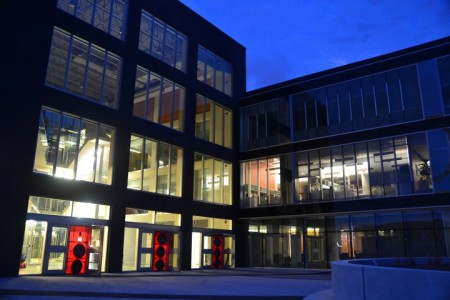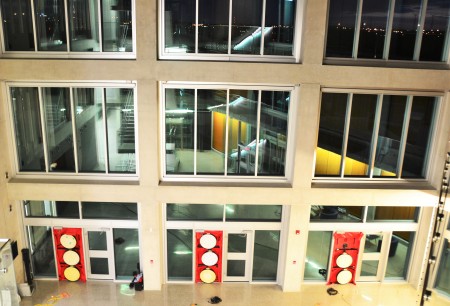As part of a Building Envelope Commissioning (BECx) package, building owners often require infrared scanning of their building’s envelope, or enclosure, as part of a commissioning process. However, the methods for air barrier integrity testing are poorly understood and rely heavily on the building’s HVAC system and the vagaries of mother nature. If the standard selected is ASTM 1186 Standard Practices for Air Leakage Site Detection in Building Envelopes and Air Barrier Systems, then we have some recommendations; wait for a cold day, scan the indoors too and BYOF – Bring Your Own Fans!
The standard suggests a delta T of at least 5oC between indoor temperature and outdoor temperatures. The standard also assumes the building’s existing HVAC system will be able to pressurise the building to see if any hot spots can be identified from the outside. The standard requires a 20Pascal difference between inside and out, though its rarely achieved in tests as most thermographers don’t carry the equipment to measure pressure difference. The idea is that with the building pressurised, air leaks out of the envelope where breaches are and the thermographer can usually detect the leak(s) by means of surface temperature abnormality.
As soon as the initial scan is completed, then the indoor volume is depressurised to reversed air flowing through those breaches. Typically, the existing HVAC equipment is used to depressurise the building and the hot spots are scanned again to see if there’s a change from the pressurisation state. Typically a change in surface temperature between the depress/pressurisation states indicates a breach in the building’s air barrier system.

BYOF: When the existing HVAC can’t reach 20 Pascals, it’s time to pull in the big guns! We have ‘em; the dirty dozen Model 3 TEC fans will move a lot of air to really highlight the contrast in air barrier leakage diagnostics using infrared.
For success, it should be noted that ASTM 1185’s suggested minimum of 5oC is too low. The building owner would be well advised to re-schedule the scan for cooler exterior temperatures that are greater than 10oC. The mechanical operator will say, but “I can bring the temperature up!” and yes it might be possible, but it takes a great deal of time, especially if the building is using radiant heat or has large thermal mass that wicks up the heat.
Our experience on recently tested commercial office space suggests that the existing HVAC equipment can’t reliably create enough pressure change on the building envelope. ASTM 1185 suggests that a minimum pressure difference on the building envelope should be 20 Pascals. Getting the building up to 20Pascals of indoor pressure was possible, but getting the building to depressurise was not possible with the building’s existing HVAC equipment. Luckily we had brought and installed 8 Model 3 fans from The Energy Conservatory. This allowed us to precisely control the pressurisation and depresurisation stated so that we could do our scanning without the pressure dropping.

Using portable fans, we can control the pressurisation state of the building with consistency not achievable with the building’s HVAC systems.

